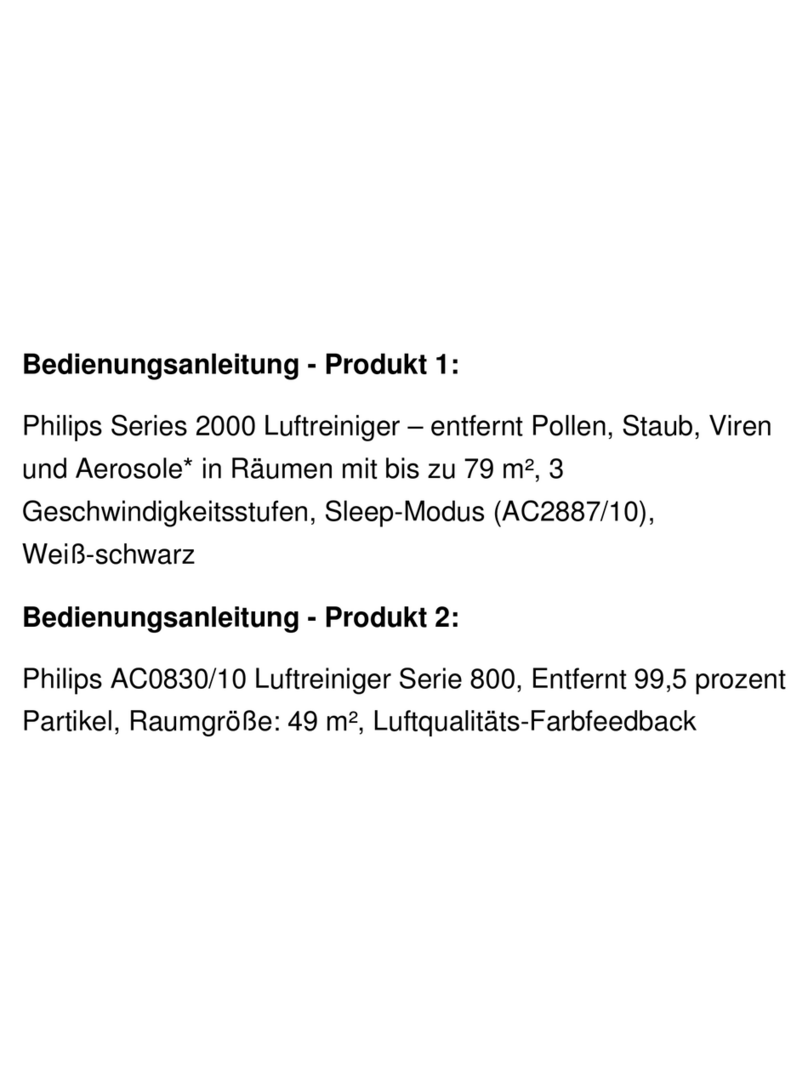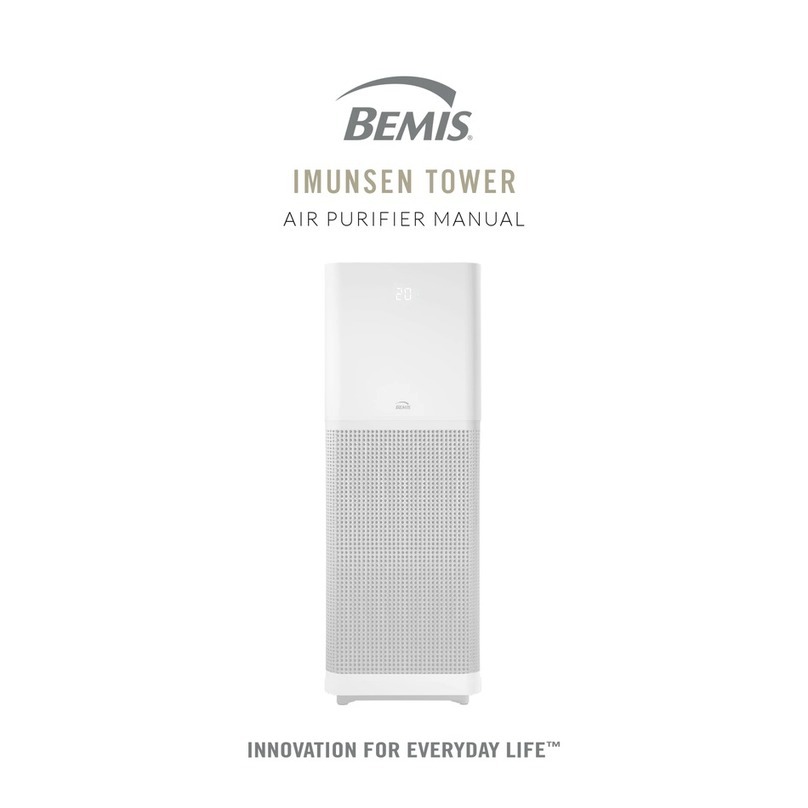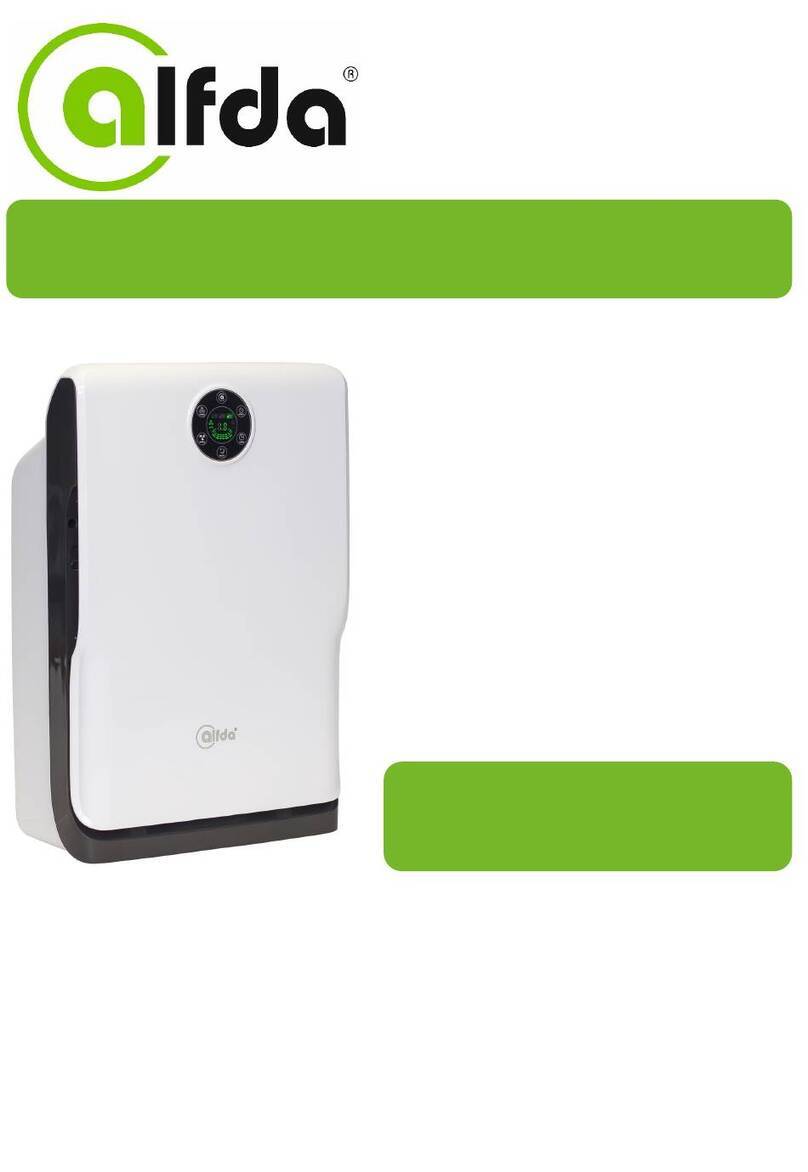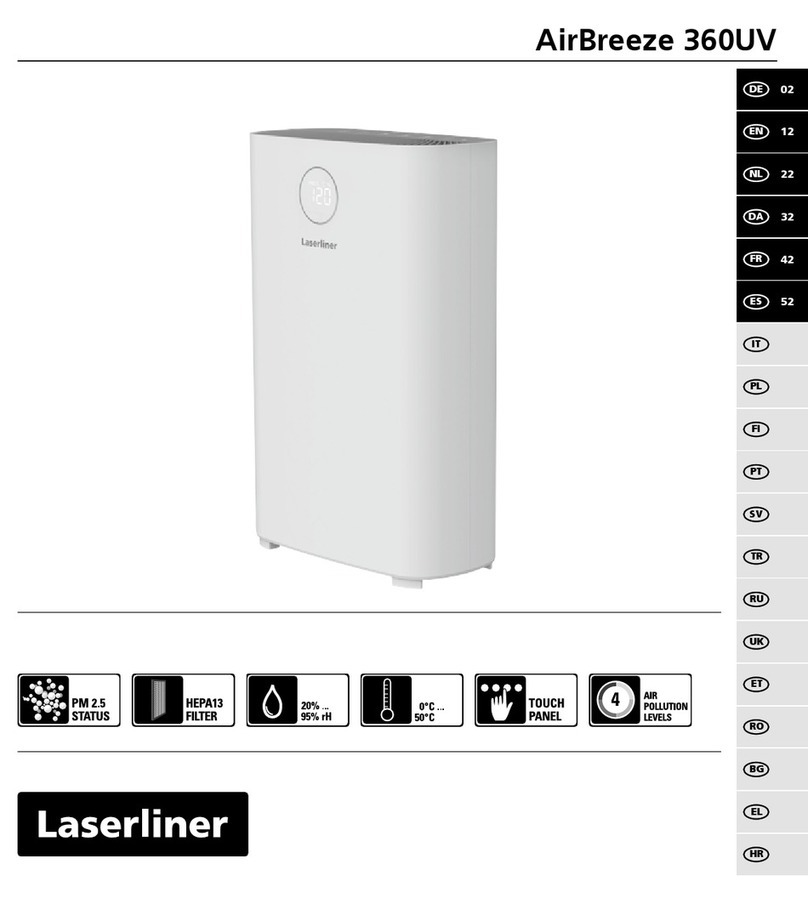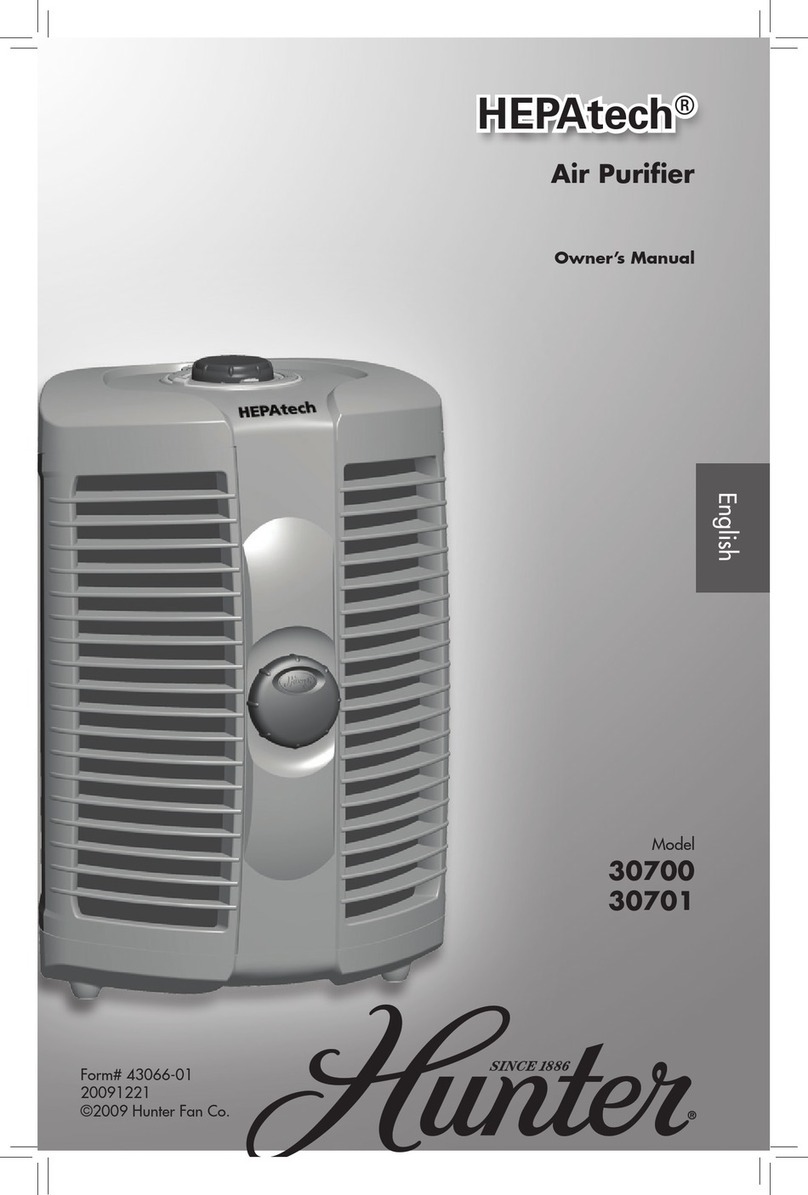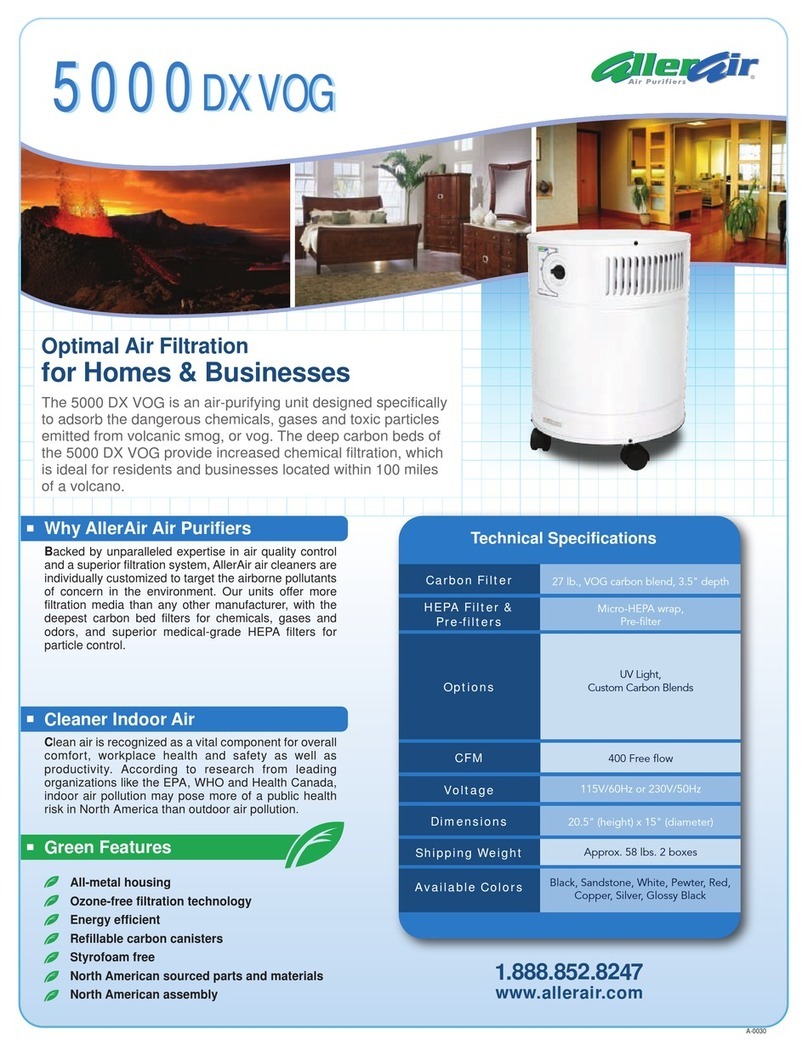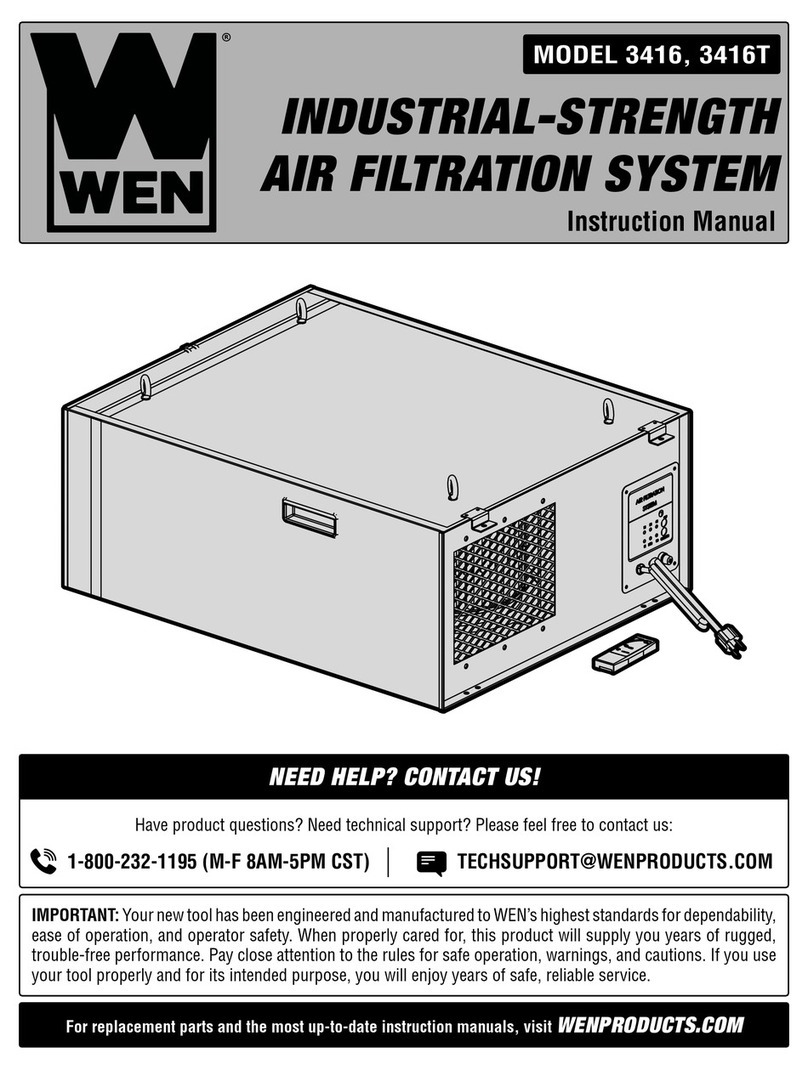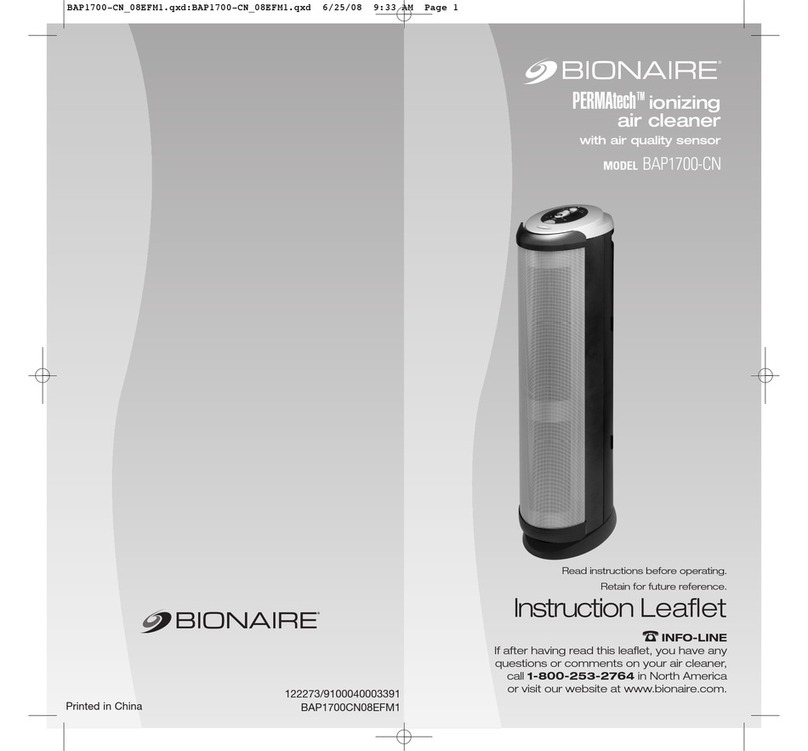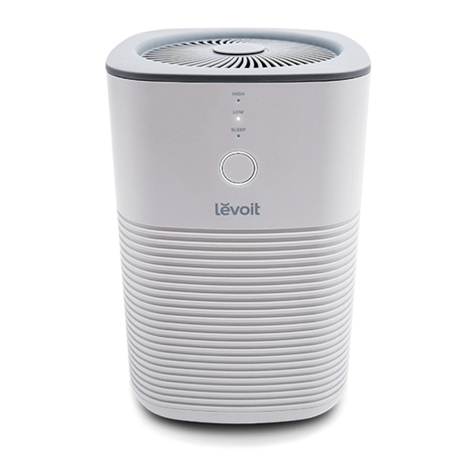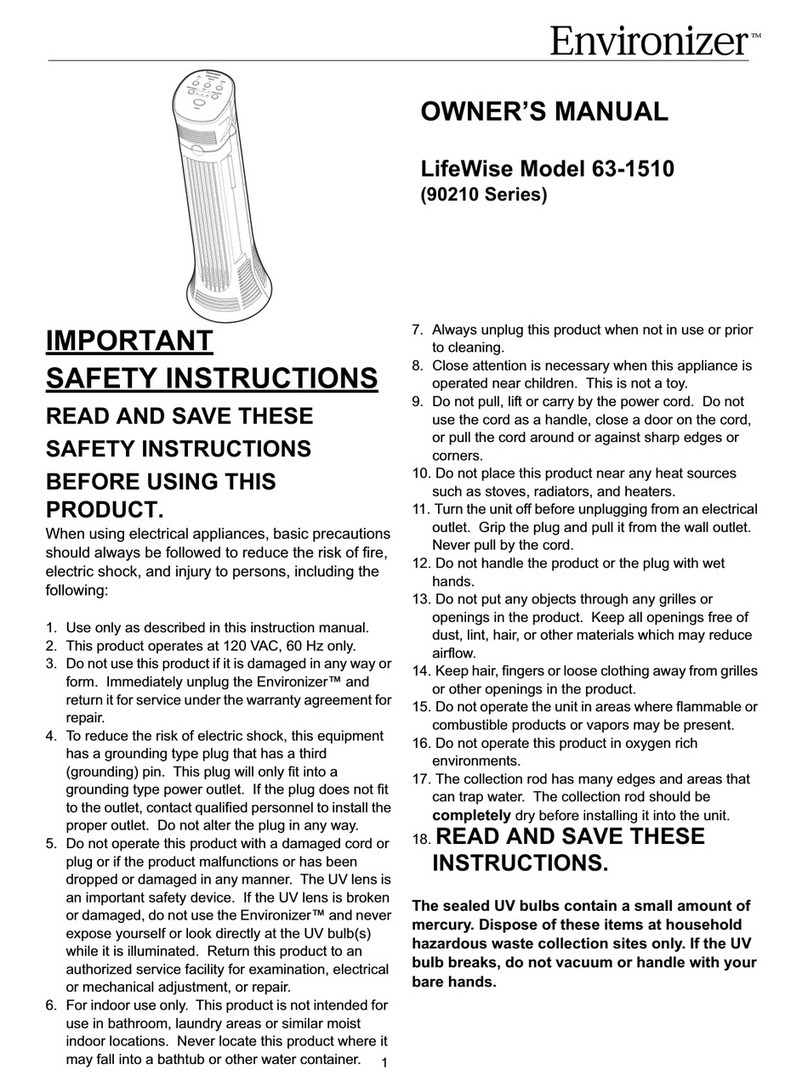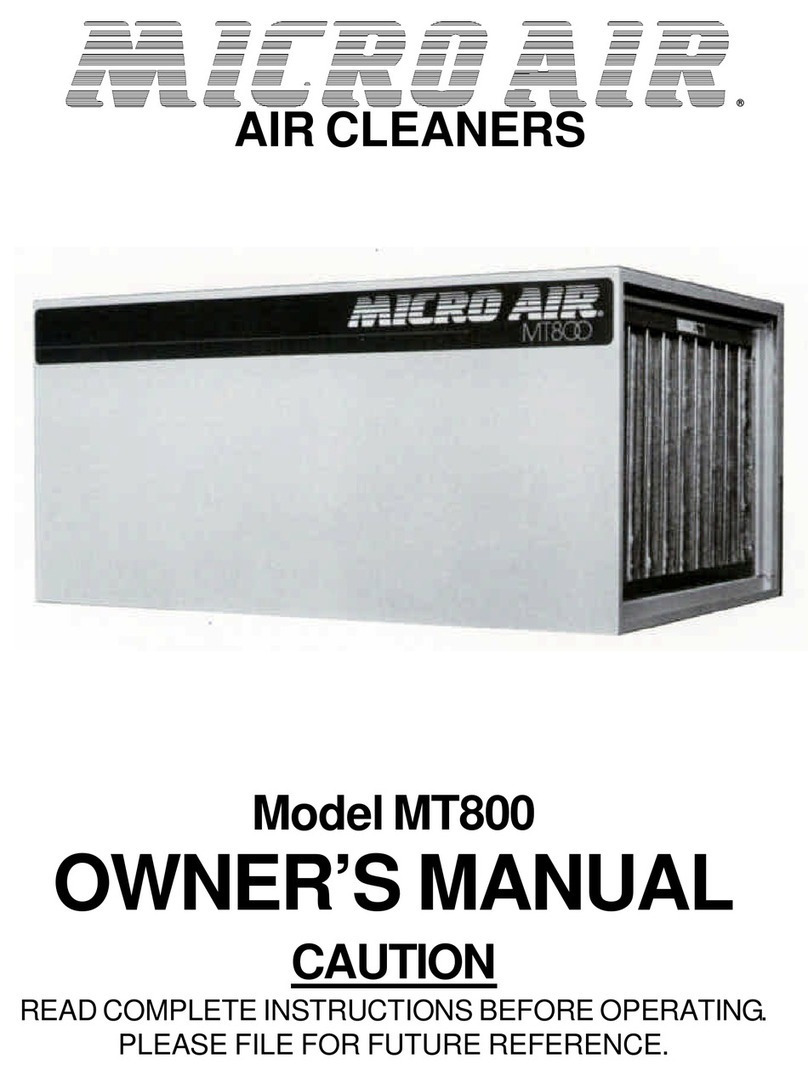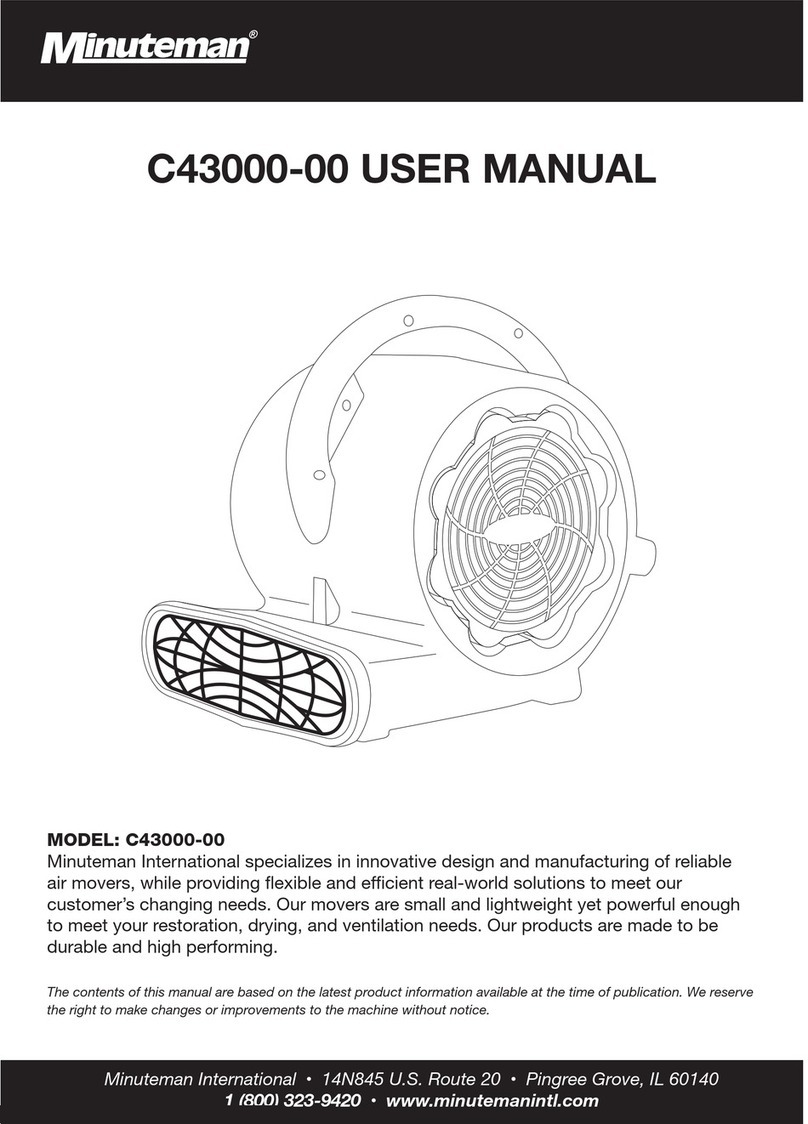ifs IFE 2000 User manual



Seite
1
Table of contents
1. General
1.1. Status of these operating in
1.2. Intended use structions
1.3. Contents of delivery
2. Build and effect of the filter engine
2.1. Build
2.1.1. Filtering device
2.1.2. Case
2.1.3. Drive
2.2. Operating effect
2.3. Required space
3. Specifications
3.1. Name and type
3.2. Specifications of the filter engine
3.2.1. Operating specifications
3.2.2. Measurement
3.2.3. Sound level
3.2.4. Surrounding conditions
3.2.5. Connection values
3.2.6. Other
4. Security precautions
4.1. Explanation of signs and symbols
4.2. Used pictographs and security notices at the engine
4.3. Organisational measures
4.4. Informal security precautions
4.5. Instruction of personnel
4.6. Individual safety garment
4.7. Transport and installation
4.8. Safety and security features
4.9. System controls
4.10. Security precautions in operation
4.11. Dangers from electricity
4.12. Special danger spots
4.13. Emergency instructions
4.14. Maintenance and troubleshooting
4.15. Modifications of the filter engine
4.16. Cleaning and disposal of the filter engine
4.17. Noise of the filter engine
4.18. Dangers of emitted dust and steam
4.19. Dangers of electromagnetic radiation (high frequency magnetic fields)
4.20. Dangers of emitted ionised radiation
4.21. Residual risk

Seite
2
5. Shipment and storage
5.1. Information and precautions for shipment
5.2. Loading, unloading, transport in plant
5.2.1. Transport with lifting truck
5.3. Check at acceptance of recipient
5.4. Packaging, insulation
5.5. Announcement and documentation of damages in transit
5.6. Place and duration of storage, security precautions
6. Installation
6.1. Place of installation, place of employment
6.2. Installation, fastening and anchoring of the filter engine
6.3. Establishment of energy and power supplies
6.3.1. Electrical power supply
7. Operation
7.1. Security features
7.2. Control and display
7.2.1. At the device
7.3. Ways of operation
7.3.1. Automation
7.4. First-time operation
7.5. Trial run
7.5.1. Preparation
7.6. Production operations
7.6.1. Switching the filter engine on
7.6.2. Switching the filter engine off
7.6.3. Running the filter engine after emergency shutdown (NOT-AUS)
8. Disturbances, troubleshooting
8.1. Avoiding disturbances
8.2. Troubleshooting
9. Maintenance and servicing
9.1. Inspection and maintenance
9.2. Cleaning of the filter engine
9.2.1. Cleansing agents
9.3. Servicing
9.4. Emergency support, customer support
10. Shutdown, dismantling, disposal
10.1. Taking the filter engine out of work
10.2. Dismantling of the filter engine
10.3. Disposal
11. Declaration of conformity to regulations of the European Community
12. Guarantee and liability
12.1. Duty of the operator
12.2. Duty of the personnel
12.3. Guarantee and liability
12.4. Copyright

Seite
3
1. General
1.1 Status of these operating instructions
The basic requirement for running this filter engine in a secure and trouble-free way is
knowledge of the basic security requirements and safety precautions.
These operating instructions contain the most important information to run the filter
engine safely.
These operating instructions have to be obeyed by any person working on the filter
engine.
Moreover, all regulations and safety precautions issued by the local authorities are to be
obeyed.
1.2 Intended use
The IFE (Electronical precipitation engine for oil and emulsion mists) was
constructed and built in consideration of a danger analysis study. All required
harmonised norms and other technical specifications have been carefully selected and
kept in the acts of designing, constructing and building this engine. It therefore complies
to the state-of-the-art and guarantees a maximum amount of security and safety in
operation.
However, the system security in its operation can only be kept when all required
precautions are complied with. It is the duty of the operator of the filter engine to plan
these measures and observe their execution.
This filter engine (type IFE 2000) is an electronical precipitation engine for oil and
emulsion mists, conceived exclusively for sucking off and filtering of oil and emulsion
mists as well as smoke and thus only to be used for this purpose. Any other or extended
use of the engine is not intended. IFS Industriefilter-Service GmbH is not to be made
liable for any damages caused by unintended use of the engine.
Intended use also contains
Regarding all safety precautions stated in these operating instructions and
Keeping of all inspection and maintenance services.

Seite
4
1.3 Contents of delivery
Basic system equipment
- Case
- Metal pre-filter (on rails)
- Ionisation device (on rails)
- Collector (on rails)
- Metal post-filter (on rails)
- Motor / propeller (direct drive)
- Drain (for condensate)

Seite
5
2. Build and effect of the filter engine
2.1 Build
10
9
4
1 3 5 7 8
2 6
Pos. Label
1 Pre-filter (of knitted aluminium)
2 Ionisation device (complete)
3 Isolation for for ionisation device
4 Ionisation wire (of tungsten)
5 Drain (no replacement part)
6 Collector (complete)
7 Insulation for collector
8 Post-filter (of knitted aluminium)
9 Motor 0,75 KW
10 Used air emitting mat for IFE 2000
2.1.1 Filtering device
The IFE-electronical precipitation engine (Type IFE 2000) was built in compact
functional style. Its basic build is shown in the drawing.

Seite
6
2.1.2 Case
The IFE - electronical precipitation engine (Type IFE 2000) consists of a robust, easy
to maintain case construction made from corrosion-resistant steel plates.
2.1.3 Drive
The engine is driven by an electric motor, which is arranged axially in the currents
direction laterally protrudes from the case.
(for its operating specifications refer to chapter 3.2.1, page 8)
2.2 Operating effect
The operating effect of the IFE - electronical precipitation engine (Type IFE 2000) is
caused by electrically charging the particles in the air current by ionisation and
afterwards depositing them on the metal collectors.
For this effect it is urgently required that the used cooling agents do not attack
aluminium or synthetics.
The dirt particles in the air current will be precipitated when streaming past the following
filter stages and elements:
Filter stage 1
The metal pre-filter keeps back the biggest drops and pollutants as well as shavings.
Filter stage 2 (Ionisation zone)
The stream that is to be filtered will at first be led through the so called ionisation zone
of the precipitation engine. An electrical field of 10000 volts is forms by the tungsten
wires in the ionisation device. That is where the aerosols and other particles (both liquid
and solid) will be electrically charged.
The precondition for a sufficient electrical charging of the particles is that they have a
certain value of electrical resistance.
Beside the value of electrical resistance the polarisation (whether positive or negative)
has a decisive effect on the following precipitation. If the particles to be precipitated are
negatively polarised, there should be a negative charging in the course of streaming
through the ionisation device and vice versa. By this it is ruled out that opposed
polarisation reduces or neutralises the charging of the particles.
Filter stage 3 (Precipitation zone)
In the following precipitation zone the charged particles pass through the collection
device consisting of aluminium plates. Simultaneously to the current of air these plates
are alternatingly charged with ca. 6000 volts (opposite polarity) or grounded.

Seite
7
The charged particles are precipitated on the precipitation electrodes and thus divided
for the air current. The bigger the difference of charge is between the aluminium plates
and the particles, the more effective the precipitation will be. Gravity will make the
particles of the cooling agents that are deposited on the vertical electrodes drain into the
reservoir, unless the particles get solidly.
Filter stage 4
The last element is a metal filter that is responsible for a good distribution of air.
2.3 Required space
The IFE - electronical precipitation engine (Type IFE 2000) can be run for a direct
sucking off at the spot. Besides it can be used as a filter for circulating air when placed
at the sheds ceiling. Other places of installation for this use cover the use at the sheds
side walls and any other place indoor when placed on a rack.
This allows short tubes to retrace the clean air into the production sheds.

Seite
8
3 Specifications
3.1 Name and type
Name: Electronical precipitation engine for oil
and emulsion mists
Type: IFE 2000
3.2 Specifications of the filter engine
3.2.1 Operating specifications
Sucking performance 2.000 m2/h
Precipitation rate 99 %
Particle size from 0,01
(in gravimetric analysis)
Filter area 12,9 m2
Motor performance 0,75 kW
Operating voltage 230/400 V
Current frequency 50/60 Hz
Phases 3
3.2.2 Measurement
Length 750 mm
Width 465 mm
Height 625 mm
Weight ca. 135 kg
3.2.3 Sound level
Permanent sound level 74 dB (A)
3.2.4 Surrounding conditions
Permissible surrounding
temperature in operation from 10 C 35 C
Permissible surrounding
temperature in storage from 5 C to 45 C
Permissible humidity 40 to 75 % (relative humidity)

Seite
9
3.2.5 Connection values
Voltage refer to circuit diagram
Diameter of power supply 1,5 mm2 (at least)
Fuse 6 A
Safety class 1P 54
Regulations of local authorities and power suppliers are to be observed (e.g. when
using supplies of too big length)
3.2.5 Other
Information
Warning!
This filter engine in exclusively designed for industrial use. It
can cause radio interference when used in residential, office
and business places.
When reselling the engine the operator may be held
responsible for measures of suppression of interference.

Seite
10
4. Security precautions
1.1. Explanation of signs and symbols
Important information
Warning of dangerous electric tension
Warning of electromagnetic field
Warning of danger of falling
Warning of possible damage of the
environment

Seite
11
Information
4.2 Used pictographs and security notices at the engine
At the main switchbox
4.3 Organisational measures
The required individual safety garments (like e.g. protection goggles, protective gloves
etc. (refer to chapter 4.6 - Individual safety garment, page 12) ) have to be supplied by
the operator.
All available security features and precautions have to be regularly checked.
4.4 Informal security precautions
These safety instructions have to be kept permanently at the place of operation of
the filter engine.
Additionally the general and local regulations for prevention of accidents and
environmental pollution have to be supplied and obeyed.
All security information on the engine (refer to chapter 4.2 - Used pictographs and
security notices at the engine, page 11 )is to be kept in readable condition and
renewed if necessary.

Seite
12
4.5 Instruction of personnel
Only instructed and introduced personnel is allowed to work on the filter
engine.
Occasionally the personnels consciousness of security and dangers is to be
supervised according to the regulations of these operating instructions.
The responsibilities for installation, running, controlling, maintaining, preparing
and repairing of the filter engine have to be clearly laid down.
Learning personnel may only work on the engine under the supervision of an
instructed person.
The work on the engine is exclusively allowed to persons older than 18 years.
4.6 Individual safety garment
The operating personnel has to wear the following safety garments when
working at the filter engine:
Protective gloves
Protective goggles
Additionally the local security regulations have to be obeyed.
4.7 Transport and installation

Seite
13
When installing the filter engine in connection with other machines or devices the
respective regulations have to be obeyed.
Installation at the ceiling or at the walls is only to be performed using the respective
fastening elements.
4.8 Safety and security features
Before every switching on of the filter engine all safety and security features have to
be properly installed and functioning.
Safety features may only be removed
after shutdown and
after the prevention of a premature start of the filter engine (e.g. by switching of
the master switch).
At the delivery of components the safety features have to be properly installed by the
operator.
Security switches must not be bridged.
4.9 System controls
The control of the filter engine is performed in
Direct access to the filter engine (e.g. at the work centre)
External use directly via the master switch at the case.
4.10 Security precautions in operation
The filter engine may only be run if all safety and security features are fully
functioning.
Before switching on the filter engine it has to be verified that no person can be
endangered by the starting filter engine.
At least once per shift the filter engine has to be checked for externally visible
damages and on its ability to precipitate (refer to chapter 9, Maintenance and
servicing, page 26).
In case of occurring troubles or faults the engine is to be instantly shut down. The
faults have to be repaired by proficient personnel only (refer to chapter 8,
Disturbances, troubleshooting, page 24).
4.11 Dangers from electricity

Seite
14
Works on the electrical power supply have only to be
performed by proficient electricians.
The electrical equipment of the system has to be regularly checked for (for this refer
to local regulations, like e.g. VBG 4). Faults like loose connections or burnt wires
must be instantly removed.
The switchbox has to kept closed always. Access to it may only be granted to
authorised personnel.
Only use original fuses! The electrical system will be destroyed when using too
strongly resistant fuses.
Plugged connections may be plugged or unplugged not in live, but in voltage free
state only.
If work on parts that may be live is necessary, a second person has to be involved
that triggers the master switch or the emergency-shutdown switch (NOT-AUS) in
cases of emergency. A wide area around the place of work has to be to be cordoned
off by a red-white security chain and a warning sign. Only use voltage insulated
tools!
4.12 Special danger spots
A special danger spot is the space inside the filter engine, especially the
insertions and the device (Danger of incisions!). Always wear protective
gloves when maintaining the engine!
4.13 Emergency instructions
In cases of emergency always switch off the master switch.
Burning oil or emulsions have to be extinguished by the use of a CO2 or powder fire
extinguisher.
Fires in the electrical system of the filter engine have to be extinguished by a CO2 fire
extinguisher.
4.14 Maintenance and troubleshooting

Seite
15
A wide area around the place of maintenance has to be cordoned off, if necessary.
The required maintenance, inspection and repair services have to be performed within
the period stipulated.
The operating personnel has to be informed before beginning the above mentioned
services.
At all services of maintenance, inspection and repair even outside the
filter engine the system has to be switched to the voltage free mode.
Do put up a sign forbidding the premature switching on!
Should the services be performed above body height the intended steps
and ladders or hydraulic ramps have to be used. Do not use parts of the
engine as steps! If the maintenance services have to be performed in big
heights, make use of safeguards!
All of the grips, steps, railings, banisters, pedestals, landings and ladders
have to be kept free from soling as well as from snow and ice!
At the beginning of the maintenance/repair service the filter engine and especially
connections, plugs and screws have to be cleaned from oil and emulsion remains! Do not
use aggressive cleansing agents! Do not use cleansing cloths made of fibrous tissue!
Cover all openings through which no cleansing agent must enter the filter engine for security
or operating reasons before the cleaning of the filter engine. Do not use water or steam
sprayers when cleaning the engine. Especially endangered are the electric motor, the switch
box and the locking switch.
After the cleaning all cover have to be removed without residue!
Check all loosened screw for proper fit!
Check all safety features for proper function after the cleaning service.

Seite
16
4.15 Modifications of the filter engine
Do not perform structurally modify or extend the engine without the permission of the
manufacturer. This is also valid for welding works at load-bearing parts.
All extensions and modifications require approval in writing of IFS Industriefilter
Service GmbH.
Faulty parts of the engine or parts being not in perfect condition have to be replaced
immediately.
Only make use of original replacement parts and parts subject to wear and tear.
Parts of different origin cannot guarantee a construction and manufacturing that is
sufficient for the demands of safety and use.
4.16 Cleaning and disposal of the filter engine
Used agents and materials have to be properly used and disposed. The
regulations of local authorities have to be obeyed especially in the use of
cleaning agents.
4.17 Noise of the filter engine
The permanent sound level coming from the filter engine amounts to 74 dB (A).
4.18 Dangers of emitted dust and steam
When using the IFE-electronical precipitation engine (Type IFE
2000), e.g. in working centres, some spare time has to be kept to
allow a complete evacuation of residues (e.g. emulsion mists) from
the space inside the engine

Seite
17
4.19 Dangers of electromagnetic radiation (high frequency magnetic fields)
The working principle of this filter engine causes its susceptibility to
electromagnetic impact. Strong electromagnetic fields can cause
damages to its electronical system. That is why electromagnetic
interference in its vicinity should be avoided.
4.20 Dangers of emitted ionised radiation
The use of a closed and sealed case according to safety class 1, does not allow ionised
radiation the emit from the filter engine. There is no ionised radiation outside of the filter
engine.
4.21 Residual risk
The filter engine was manufactured according to the state-of-the-art and all relevant
security regulations. Still dangers to life and limb of the operating personnel or of a third
party can occur. There also are possible dangers to the filter engine or other material
assets.
That is why the filter engine shall only be used
for the intended use and
in technically perfect condition.
Disturbances that may limit the security of the operation have to be instantly removed
by proficient personnel.

Seite
18
5 Shipment and storage
5.1 Information and precautions for shipment
The filter engine and its accessories have to be properly fastened to the means of
transport (e.g. truck) before the transport.
The filter engine has to be protected from water damages. Cover it with foil and use a
large canopy!
The truck driver is responsible for checking for the proper fastening of the filter engine
and has to be acknowledged in the delivery note.
5.2 Loading, unloading, transport in plant
5.2.1 Transport with lifting truck
When the engine is transported with a lifting truck sensitive parts have to be secured
and protected.
Pay attention on sufficient lifting power of the lifting truck!
5.3 Check at acceptance of recipient
When receiving the filter engine it is required to check for visible damages in transit, especially
at
mobile parts and
electrical wires.
Moreover the recipient should check for
damages of the lacquer,
dents in the switch box, metal parts, coverings etc.,
insertions and door for possible damages in transit.
Additionally the delivery note has to be checked if the stated number of items corresponds to
the delivered number of items.
This manual suits for next models
1
Table of contents
